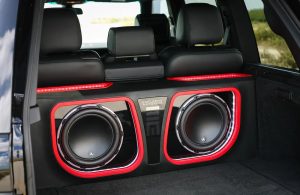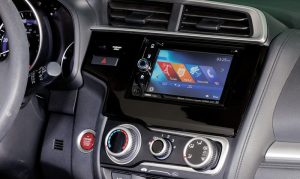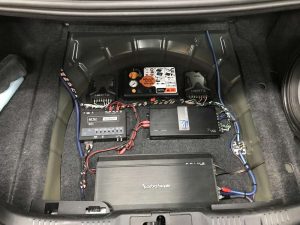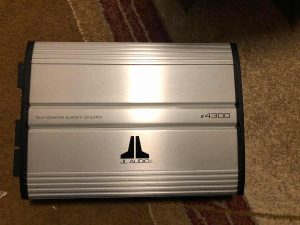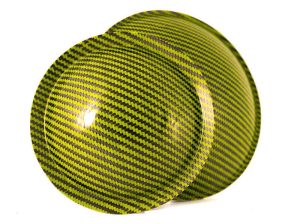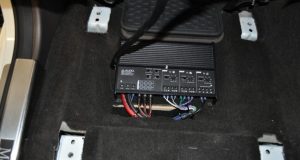Choosing the right subwoofer transforms your car audio experience. The Alpine Type E 10-inch subwoofer stands out as a popular choice for car audio enthusiasts seeking quality sound on a budget. But does it suit your needs? This guide dives into the features, performance, pros, cons, and ideal use cases of the Alpine Type E 10. By the end, you’ll know if this subwoofer deserves a spot in your vehicle.
Contents
- What Makes the Alpine Type E 10 Special?
- Performance: How Does the Alpine Type E 10 Sound?
- Pros and Cons of the Alpine Type E 10
- Who Should Buy the Alpine Type E 10?
- Installation Tips for Optimal Performance
- Comparing the Alpine Type E 10 to Alternatives
- User Feedback: What Owners Say
- Is the Alpine Type E 10 Worth It?
What Makes the Alpine Type E 10 Special?
Alpine, a trusted name in car audio, designs the Type E 10 to deliver solid bass without breaking the bank. This subwoofer balances affordability with performance, making it a go-to for beginners and seasoned audiophiles alike. Let’s explore its standout features.
Key Features of the Alpine Type E 10
- 10-Inch Kevlar-Reinforced Pulp Cone: The durable cone produces clean, tight bass, perfect for various music genres.
- High-Excursion Santoprene Surround: This allows greater cone movement, enhancing low-frequency output.
- Power Handling: It handles 50-250 watts RMS with a peak power of 750 watts, offering flexibility for different setups.
- Frequency Response: Ranging from 32 Hz to 1,000 Hz, it captures deep lows effectively.
- Sensitivity: At 87 dB, it efficiently converts power into sound.
- Dual Progressive Nomex Spiders: These ensure stability during intense bass output, reducing distortion.
These features make the Type E 10 a reliable choice for those seeking quality bass on a budget. But how does it perform in real-world scenarios?
Performance: How Does the Alpine Type E 10 Sound?
The Alpine Type E 10 shines in delivering tight, accurate bass. It suits listeners who enjoy hip-hop, rock, or electronic music, providing punchy low-end notes without overwhelming mids and highs. Users on forums like Best Buy reviews praise its ability to “thump” in a sealed box, noting its clean sound even at high volumes. One user mentioned, “I have two Type E’s in a sealed box, and it freaking thumps!”
In a sealed enclosure, the subwoofer produces precise bass, ideal for sound quality (SQ) enthusiasts. For those craving louder, boomier bass, a ported box can enhance output, though it may sacrifice some tightness. The Type E 10 performs best with proper tuning and a compatible amplifier, such as the Alpine MRP-M500, which delivers 500 watts at 2 ohms.
Sound Quality Across Music Genres
- Hip-Hop: The subwoofer handles deep basslines well, giving tracks like Kendrick Lamar’s “Humble” a satisfying rumble.
- Rock: It complements kick drums and bass guitars, adding depth to songs like Foo Fighters’ “Everlong.”
- Electronic: For EDM tracks, it delivers pulsating lows, though it may not reach the ultra-low frequencies of high-end subs like the Alpine Type R.
While the Type E 10 impresses for its price, it’s not flawless. Let’s weigh its strengths and weaknesses.
Pros and Cons of the Alpine Type E 10
Pros
- Affordable Price: Often retailing for $45-$60, it’s a steal for budget-conscious buyers.
- Versatile Performance: Works well in both sealed and ported enclosures, catering to different sound preferences.
- Durable Build: The Kevlar-reinforced cone and Santoprene surround ensure longevity.
- Easy to Power: Its 250-watt RMS rating pairs well with mid-range amplifiers, making it accessible for beginners.
- Compact Size: The 10-inch size fits most vehicles, preserving trunk space.
Cons
- Limited Low-End Extension: It struggles with ultra-low frequencies compared to premium subwoofers like the Alpine Type R or JL Audio W0.
- Not Ideal for High-Power Setups: Pushing beyond 250 watts RMS risks damage.
- Basic Design: Lacks the advanced engineering of higher-end models, which may disappoint audiophiles seeking top-tier performance.
These pros and cons highlight the Type E 10’s value for casual listeners, but it may fall short for those chasing competition-level bass.
Who Should Buy the Alpine Type E 10?
The Alpine Type E 10 suits specific audiences. Here’s a breakdown to help you decide.
Ideal Users
- Budget-Conscious Enthusiasts: If you want quality bass without spending hundreds, this subwoofer delivers. Its low price makes it perfect for first-time installs.
- Small Vehicle Owners: The 10-inch size fits compact cars or SUVs, leaving room for groceries or gear.
- Sound Quality Seekers: Those prioritizing tight, accurate bass over earth-shaking volume will appreciate its performance in a sealed box.
- Beginners: Its modest power requirements and straightforward setup make it forgiving for newcomers to car audio.
Who Should Look Elsewhere?
- Bass Heads: If you crave window-rattling bass for tracks like Future’s “Mask Off,” consider a more powerful sub like the Alpine Type R or Rockford Fosgate P3.
- High-Power Enthusiasts: Those with amplifiers exceeding 500 watts RMS should opt for subs designed for higher power, such as the JL Audio W3.
- Audiophiles Seeking Premium Sound: If you demand the deepest lows and crystal-clear accuracy, higher-end models like the Alpine X-W12D4 may better suit your needs.
Understanding your priorities—budget, sound preference, or power—guides whether the Type E 10 fits your setup.
Installation Tips for Optimal Performance
To maximize the Alpine Type E 10’s potential, proper installation is key. Here are practical tips to ensure great sound.
Choose the Right Enclosure
- Sealed Box: A sealed enclosure (0.75-1.0 cubic feet per sub) delivers tight, accurate bass, ideal for rock or jazz. It’s also smaller, saving trunk space.
- Ported Box: A ported box (larger, around 1.5 cubic feet) boosts volume for hip-hop or EDM but requires more space and precise tuning (around 32-35 Hz).
- Custom Boxes: Companies like Hammerhead in Toronto build custom enclosures tailored to your sub and vehicle, ensuring optimal airspace.
Pair with a Compatible Amplifier
The Type E 10 thrives with amplifiers delivering 200-250 watts RMS at 4 ohms. The Alpine MRP-M500 or Rockford Fosgate R250X1 are excellent matches, providing clean power without overpowering the sub. Avoid underpowering, as it can cause distortion, or overpowering, which risks blowing the sub.
Tune Your System
- Gain and Bass Boost: Set the amplifier’s gain to match the sub’s RMS rating and minimize bass boost to avoid distortion.
- Crossover Settings: Use a low-pass filter (around 80-100 Hz) to ensure the sub handles only bass frequencies, leaving mids and highs to your speakers.
- EQ Adjustments: Boost frequencies around 31.5-63 Hz slightly if the bass feels weak, as some users noted with sealed boxes.
Sound Deadening
Adding sound-deadening material to your doors and trunk reduces rattles and enhances bass clarity. Brands like Dynamat or Kilmat work well and are affordable.
Proper installation transforms the Type E 10 from good to great, ensuring you hear every beat clearly.
Comparing the Alpine Type E 10 to Alternatives
How does the Type E 10 stack up against other subwoofers in its price range? Let’s compare it to two popular competitors.
Alpine Type E 10 vs. JL Audio 10W0v3-4
- Price: The Type E 10 costs $45-$60, while the 10W0v3-4 retails for $100-$150.
- Power Handling: The JL Audio handles 300 watts RMS, slightly more than the Type E’s 250 watts.
- Sound Quality: The 10W0v3-4 offers deeper bass extension, making it better for EDM or rap, but the Type E 10 holds its own for tighter bass.
- Best For: Choose the Type E for budget builds; opt for the 10W0v3-4 if you want more low-end punch and have extra cash.
Alpine Type E 10 vs. Pioneer TS-WX010A
- Price: The Pioneer is pricier, around $150-$200, but designed for ultra-compact installs.
- Power Handling: The Pioneer handles less power (50 watts RMS), making it less versatile than the Type E.
- Sound Quality: The Type E 10 delivers stronger, more defined bass, while the Pioneer suits small vehicles like the Suzuki Jimny needing minimal bass.
- Best For: The Type E 10 wins for versatility and value; the Pioneer fits niche, space-constrained setups.
These comparisons show the Type E 10’s strength as a budget-friendly, all-around performer.
User Feedback: What Owners Say
Real-world experiences offer valuable insights. Best Buy reviews highlight the Type E 10’s bang-for-buck value. One user swapped out Rockford Fosgate 12-inch subs for two Type E 10s and found them “just as loud” for a fraction of the cost. Another praised its performance in a sealed box with a Kenwood amp, noting its ability to handle low tones accurately.
On forums like DIYMobileAudio.com, some users criticize the Type E for lacking the power of higher-end models like the Type R, but most agree it’s a solid entry-level choice. Reddit’s r/CarAV community suggests pairing it with a 250-watt RMS amp for a “night and day” difference over head unit power.
Is the Alpine Type E 10 Worth It?
The Alpine Type E 10 offers impressive value for its price. It delivers clean, tight bass, fits most vehicles, and pairs well with affordable amplifiers. While it won’t compete with premium subwoofers like the Alpine Type R or JL Audio W3, it’s a fantastic choice for casual listeners, beginners, or those upgrading from stock systems.
Final Verdict
Buy the Alpine Type E 10 if you:
- Want affordable, reliable bass.
- Own a compact vehicle with limited space.
- Prefer sound quality over maximum volume.
- Are new to car audio and need an easy-to-install sub.
Look elsewhere if you:
- Need ultra-deep bass for high-power setups.
- Plan to compete in car audio competitions.
- Have a large budget for premium subwoofers.
Ready to upgrade your car audio? The Alpine Type E 10 might be the perfect starting point. Pair it with a quality amp, tune it right, and enjoy a richer, more immersive sound on every drive.
Where to Buy
Find the Alpine Type E 10 at retailers like Best Buy, Amazon, or TuneTimeStereo.com. Prices often drop during sales, so check for deals to save even more.
With its balance of price, performance, and versatility, the Alpine Type E 10 proves you don’t need to spend a fortune for great bass. Will you make it part of your car audio journey?

